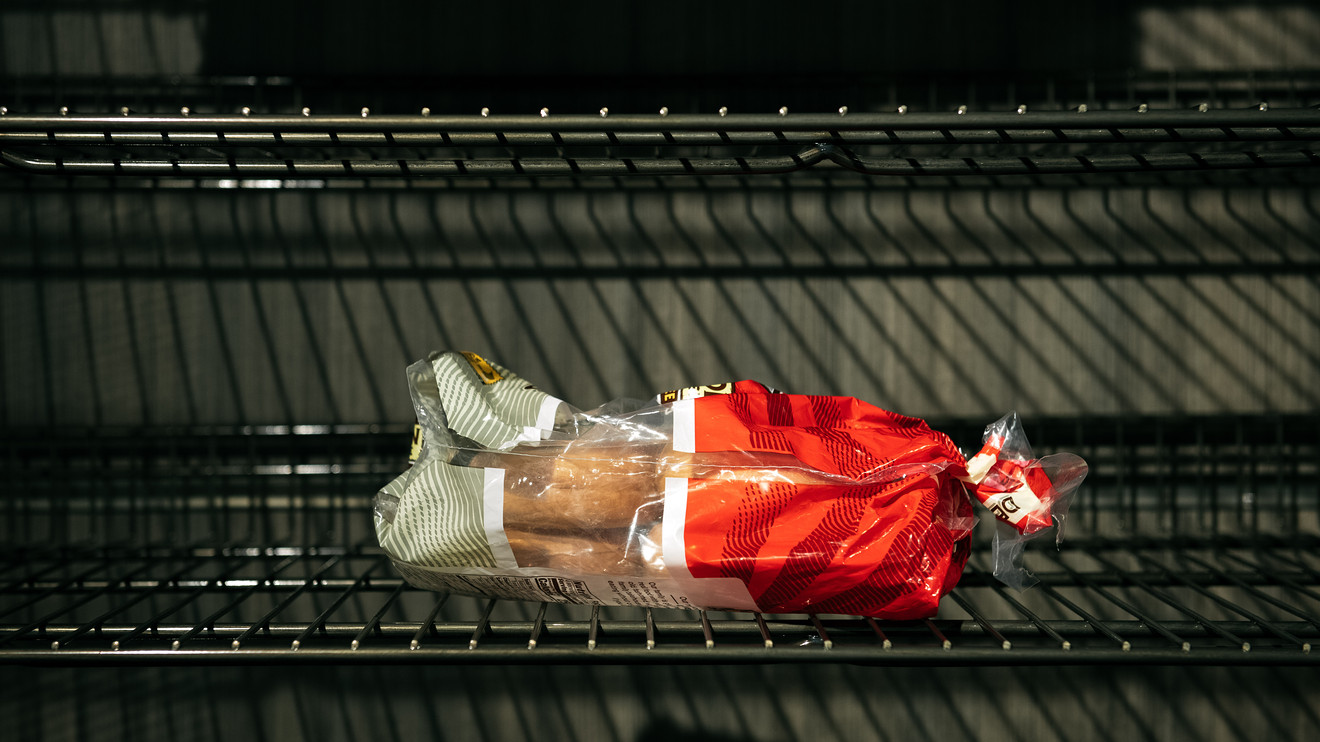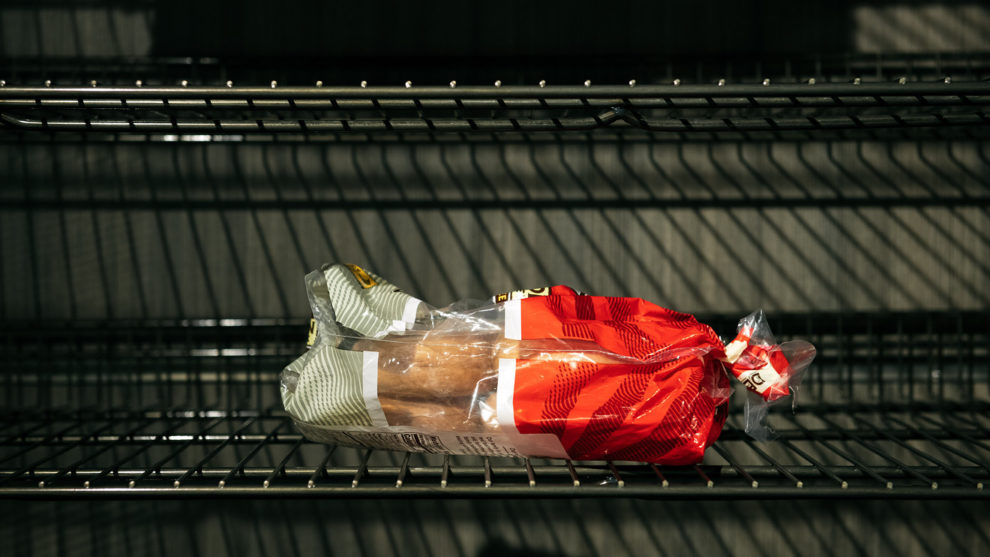
Grocery store shoppers are being met with empty store shelves, not because there is a shortage of food, but because the nation’s food supply chain is struggling to cope with either stockpiling by consumers, or a slump in demand from restaurants, and illness among workers due to the COVID-19 pandemic.
Dairy farmers have been forced to dump milk in manure pits or otherwise dispose of it due to a precipitous drop in demand from schools, restaurants and other food service providers.
At the same time, grocery stores have limited sales in an attempt to stave off hoarding and keep milk on the shelves.
Around the country, beef, pork and chicken plants have closed since the beginning of the month as workers came down with COVID-19.
With restaurants and schools closed, food-service demand has evaporated. Making the change from processing and packaging items for foodservice clients to preparing food for retail sales has proven to be a long and difficult process for food producers and manufacturers.
“I think supply chain will look fundamentally different coming out of this,” said Mark Allen, chief executive of The International Foodservice Distributors Association (IFDA).
See:Shopping in a pandemic: Gluten-free pizza looks more tempting when the supermarket shelves are bare
The $3 billion foodservice industry has seen a sales decline of 60% to 90% due to COVID-19, Allen said. The wide range takes into account all of different kinds of organizations that foodservice caters to, from restaurants to hospitals to convenience stores.
Though the supply chains for retail and foodservice are similar, there are notable differences. For example, labeling is different between the two categories, and lots of items going through the foodservice supply chains is at a jumbo size that wouldn’t even be appropriate for warehouse sellers like Costco Wholesale Corp. COST, -1.13% or BJ’s Wholesale Club Holdings Inc. BJ, +2.31%
After the Great Recession in 2008 and 2009, many foodservice companies added businesses and other institutions as customers in an effort to lessen their reliance on restaurants and recession-proof their businesses. As a result foodservice has established relationships and systems that have proven to be challenges in the COVID-19 pandemic. Allen says his group’s members find themselves “stuck” because they have product that they can’t easily move to retail channels.
“I think we will have to go through another evaluation of what it means to be recession proof,” Allen said. “It’s going to have to mean establishing some longer-term relationships with retailers. A foodservice distributor could be capable of filling the perimeter of the grocery store.”
The perimeter of a grocery store includes meat and produce. He also notes that foodservice companies have been opening up their warehouses to the public.
Dumping milk
The order to dump milk comes from the buyer. For most Wisconsin producers, that’s usually a farmer-owned cooperative who will tell certain producers to dump but will “blend” the losses across its membership so that it’s a shared burden, explained Mark Stephenson, director of dairy policy analysis at the University of Wisconsin, Madison. Producers who sell directly to processors, however, could find themselves shut out and forced to eat the cost of the dumped milk on their own.
Before the pandemic, around two-thirds of sales of fluid milk went through the retail channel, with the remainder roughly split by foodservice and institutional sales, Stephenson said. Cheese sales were around 50% foodservice, which includes food eaten at restaurants, catered events and company cafeterias, with around 40% retail and the remainder through institutions.
Even as meals shift from restaurants and foodservice to the home, dairy producers lose out. That’s because restaurants typically use more dairy, particularly cheese and butter, than consumers use at home, data show.
Related: Farmers can’t pause planting season — here’s how they’re coping with coronavirus pandemic
No surprise, it’s all making for tough times in dairyland. What’s more, it comes just as forecasts had indicated 2020 would be a “recovery year” for dairy prices after five consecutive years of relatively low prices, Stephenson said. Now prices have collapsed, with May Class III milk futures on the Chicago Mercantile Exchange dropping more than 13% since the end of March and off more than 36% year-to-date, ending Monday at $11.57 per hundredweight.
Fragile eggs
Jesse Laflamme, chief executive of specialty egg producer Pete & Gerry’s Organic Eggs, says egg farmers are also facing uncertainty. Prices have soared then dropped in a matter of months. Farmers debate what to do next as the pricing “roller coaster” ride might not be over.
Another problem is the rigidity in the egg production supply chain. A facility might specialize solely in liquid eggs rather than eggs in the shell, and may only sell that liquid product to a choice customer or two, like McDonald’s Corp. MCD, +3.67% If that customer cuts back, the egg producer has few immediate options for making up the shortfall.
On the other hand, if you’re on the retail side and demand swells, a farmer can’t simply produce more eggs overnight.
Also:5 weird products Americans are stockpiling, including a surge in demand for dumbbells
Rigidity
“Two factors in our food supply impacting right now: phenomenal efficiency born from scale and specialization,” Laflamme said, and “high scrutiny of food safety and regulation.”
Many companies have food regulatory and approval systems that can’t easily shift to other suppliers when consumer or client conditions change.
“This supply chain wasn’t made to swell like this,” Laflamme said. “Now it’s all an impediment because food is so cheap in this country and our supply chain is fragile.”
Before the coronavirus pandemic, food eaten at restaurants accounted for 16% of consumption, according to David Portalatin, NPD Group Inc. food industry advisor. Due to the high price, food away from home accounted for 50% of U.S. food dollars spent.
Another 4% of meals come from work cafeterias, university dining halls, and the like.
Watch:How to pick restaurant stocks that can survive the looming crisis
Home cooking
Now shoppers are making 9% more of their meals at home.
The Consumer Staples Select Sector SPDR ETF XLP, +1.52% has gained 6.4% over the past year while the S&P 500 index SPX, +2.67% has fallen 1.1% and the Dow Jones Industrial Average DJIA, +2.99% has slumped 8.7%.
“Clearly it’s a dramatic change in overall behavior,” Portalatin said. “It’s reasonable that supply chains would take time to adjust.”
A $19 billion relief fund for farmers was announced on Friday.
As the pandemic wears on and financial insecurity becomes a bigger factor, there could be more change afoot in consumer behavior and even less reliance on restaurants.
“Consumers will try to avoid food waste and make sure they use leftovers,” Portalatin said. “An indicator that consumers are starting to feel the heat is when people get concerned about food budget and want to use leftovers.”
Tyson Foods Inc. TSN, +2.39% has the advantage of experience in this COVID-19 pandemic, having made adaptations to its supply chain when the illness was having maximum impact in Asia, Dean Banks, the company’s president told MarketWatch. Tyson has beef and pork plants running at levels to meet demand, for instance, and says its employees have been willing to adjust.
“There’s nothing about coronavirus that makes people eat two-to-three times more food,” Banks said. “Plants can only run so fast.”
Readying the company for the unpredictable nature of the situation may also be helping the company to prepare for the future.
“There are signs of what new normal might ultimately be,” Banks said. “We have to follow the pace of change as it’s happening.”











Add Comment